- Administrator
- Albums and Singles
 To celebrate their reissue of 2008's acclaimed, widely beloved, and charmingly titled Dragging A Dead Deer Up a Hill, Kranky has concurrently issued this surprisingly solid companion album of unreleased recordings from the same period.  Nearly all of these pieces adhere to Deer's aesthetic of strummed acoustic guitars amidst a warm, dreamlike haze, but the hooks are not nearly as strong or frequent this time around.  With most artists, that would generally mean "these songs were not good enough," but Grouper has always been far more about atmosphere and mood than "songs."
To celebrate their reissue of 2008's acclaimed, widely beloved, and charmingly titled Dragging A Dead Deer Up a Hill, Kranky has concurrently issued this surprisingly solid companion album of unreleased recordings from the same period.  Nearly all of these pieces adhere to Deer's aesthetic of strummed acoustic guitars amidst a warm, dreamlike haze, but the hooks are not nearly as strong or frequent this time around.  With most artists, that would generally mean "these songs were not good enough," but Grouper has always been far more about atmosphere and mood than "songs."
This album takes its curious title from Liz Harris' teenage memory of an intact sailboat that mysteriously washed up on the beach with all of the owner's possessions still inside, but no trace of the owner.  Such an evocative inspiration is quintessentially Grouper-esque, as Harris occupies a stylistic territory as melancholy, blurry, and enigmatic as a distant memory of the void left by a stranger's death.  While there are certainly a number of structured songs to be found, only the achingly sad (and beautiful) "Living Room" fully emerges from Liz's characteristic fog of reverb and chorusing into clarity.  The remaining songs are content to take shape fleetingly or not at all, resulting in a singer/songwriter album that sounds a lot like an ambient drone album or an unplugged My Bloody Valentine.  Occasionally some understandable words, a strong melody, or an untreated guitar will appear, but the overall aesthetic is decisively warm and womblike (albeit with a lurking, omnipresent sadness).
Notably, there is almost no correlation at all between the success of a piece and how much of the original melody or chord structure is left intact or recognizable.  While the aforementioned "Living Room" is probably the album's high point, many of the other highlights occur during the pieces that have been totally liquified into a blissful haze, such as "STS" and "Difference (Voices)."  Both pieces are little more than layers of floating, indecipherable vocal cooing and a buried hint of a guitar, but they pulse and shimmer in a hypnotically sensuous way.  Wisely, Harris balances her those abstract and narcotic moments with a bit of textural and dynamic variation, periodically employing driving acoustic guitars ("Cloud in Places"), quavering feedback ("6"), and plinking, decayed-sounding piano ("Vanishing Point").
In the past, I have felt that Grouper's signature blend of tape hiss, reverb, song fragments, and sadness was a bit too monochromatic for my taste, but I have since come around quite a bit due to a shift in my own perspective.  Taken out of their greater contest, many Grouper songs can seem like little more than wordless sketches propped up by loads of reverb, but a broader look at Harris' recent discography evinces a deliberate drive to discard conventional song structures (and sometimes even words) in favor of something much more dreamlike and impressionistic.  Still, Liz can craft a wonderful hook when she wants to, which is why It is easy to see why most of these songs were cast-offs from Dragging a Deer: the songs on that album offer much more in the way of immediate gratification.  Despite that, The Man Who Died in His Boat is a remarkably cohesive and satisfying effort in its own right–it feels far more like a more abstract, varied, and experimental sister album than anything resembling a collection of outtakes.
 
Read More
- Administrator
- Albums and Singles
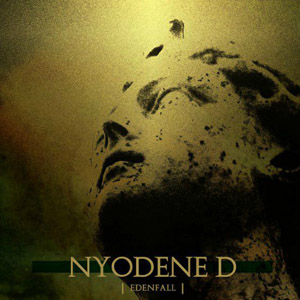 American Power Electronics is a divisive sub-sub genre for me. My tastes tend to lean towards the more industrial/punk tinged, politically ambiguous European type (Genocide Organ, Grey Wolves, etc), because the US projects are too often hung up on violent misogyny or politically unambiguous shock tactics. Projects like Nyodene D, however, manage to transcend the clichés and put together albums that stand entirely on their own, such as Edenfall.
American Power Electronics is a divisive sub-sub genre for me. My tastes tend to lean towards the more industrial/punk tinged, politically ambiguous European type (Genocide Organ, Grey Wolves, etc), because the US projects are too often hung up on violent misogyny or politically unambiguous shock tactics. Projects like Nyodene D, however, manage to transcend the clichés and put together albums that stand entirely on their own, such as Edenfall.
One of the absolute strengths of this record is, no matter how chaotic and dissonant the songs get, there is always a sense of organization and structure, even if it might not be obvious.The slow lurch on "Edenfall" that mixes overdriven noise and violent crashes comes across immediately as rhythmic, and propels the piece throughout, as additional layers of noise are added in a way that makes sense compositionally.
On "Scars of Anthropology" it might not be immediately obvious, but there is a distinctly melodic undercurrent that drives the work throughout, even amidst the dialog samples and buzzing noises."Anasazi" even goes further and focuses on a looped sample of Native American chanting that, once noise piles on, the result still feels a bit more open and spacious compared to the dense affairs that preceded it.
The other especially strong aspect of this album is the use of vocals and lyrics.The vocals, especially on the title track and "Scars of Anthropology" feature the heavy flanging and commanding bark that Mike Dando has always done so well with Con-Dom, who is one of the best vocalists in the genre as far as I am concerned.The words are not always intelligible, but the mood and emotion is quite clear, and the included lyrics make it clear that Nyodene D avoids the usual genre pitfalls.
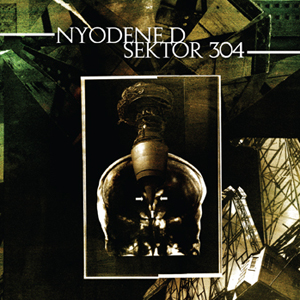
The collaboration EP with Sektor 304 makes for a strong, if not essential compliment to the album.What I mean by that is it does not feel intrinsically tied to Edenfall, even if Sektor 304 utilized songs from the disc as source material.Their reworkings of material into "The Human Fractal" and "The Shaft" come across as less organized, with an added emphasis on percussive bangs and organic found sounds."Furnace," however, feels much more like a traditional song, with structured bits of static and steady metallic percussion, giving it a distinctly old school flair.
Nyodene D's reworking of the Sektor 304 material feels more in-line with the sounds on Edenfall, although the muted percussion of "All Over All" is a bit different in comparison, while the flanged vocals and dive-bombing square waves of "Vulture (For Gil Scott-Heron)" fit right in.Both the collaborative EP and full length album make for dense, aggressive works, with their own distinct beauty.Thankfully devoid of the trite thematic elements and unstructured knob twiddlings that all too often plague this kind of material, Nyodene D stands quite nicely above his often less-impressive peers, both on his own and in his collaboration with Sektor 304.
samples:
 
Read More
- Administrator
- Albums and Singles
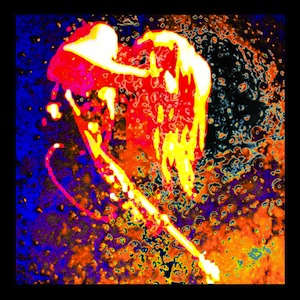 Welsh psychedelic rockers Ectogram return with a limited edition album that sees them try some new approaches in the studio. Eschewing their propensity for unrestricted jamming and long, long pieces of music, they have instead tried to create shorter, poppier works with as little electric guitar as possible. They succeeded in the song length/format but were less successful on the guitar front. The end result is one of the best albums they have put their name to.
Welsh psychedelic rockers Ectogram return with a limited edition album that sees them try some new approaches in the studio. Eschewing their propensity for unrestricted jamming and long, long pieces of music, they have instead tried to create shorter, poppier works with as little electric guitar as possible. They succeeded in the song length/format but were less successful on the guitar front. The end result is one of the best albums they have put their name to.
 
Turquoise Coal / Pure Pop for Now People
"Out of Storks" kicks off Exo-Celestial in style, a driving E-Bow melody immediately pulls me in as Ann Matthews reels off the sort of surreal lyrics that Colin Newman would have given his eye teeth for during Wire’s glory days. Beginning on such a high, I wondered where Ectogram could go from here and they do nothing to disappoint. "Geometric Overload" not only picks up the baton where "Out of Storks" left off but completely pushes the music into heavenly areas. Delicate acoustic guitar over thundering drums create a fantastic piece of alternative pop that should be on national radio right now (and I bet it would sound terrific on stage).
The energy is sustained through songs like "Diermaier’s Dream" (a nod to Faust’s drummer Zappi, who Ectogram have close contacts with) with its lyrics about "hipsters, shifters and kamikaze swimmers," stunning melodies and a seismic anti-guitar solo near the end. The clarinet on "Tritonathon" takes the group to another place altogether, guitar harmonics and glockenspiel adding a disorientating psychedelic edge to the music. Elsewhere, paranoia sets in on "Isodermia" with Alan Holmes’s noisy stint on a BC8 synthesiser with Ectogram again showing yet another side to their playing.
Released to coincide with the end of the world (i.e. the 21st December 2012), my copy arrived on the morning of the apocalypse. Overall, it was providing a (mainly) cheery background for all things Armageddon-ish but thankfully Earth has survived long enough for me to enjoy this album a few times as it gets better with every listen. Granted, there are times where I wish they would extend the songs out to the sort of lengths that are found on other Ectogram releases but overall this creative shake-up has paid off big time.
samples:
 
Read More
- John Kealy
- Albums and Singles
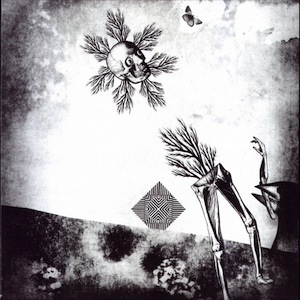 Formerly of Volcano the Bear, Nick Mott has been working on his own music for the last couple of years. This single is a mixed result, too short to give a good idea of where he is going yet it contains glimmers of potential. It looks fantastic with Mott’s distinctive collage-work on the cover but somewhat falls down on the actual music. Luckily the limited edition version succeeds where the regular version fails by adding a substantial amount of music to the work.
Formerly of Volcano the Bear, Nick Mott has been working on his own music for the last couple of years. This single is a mixed result, too short to give a good idea of where he is going yet it contains glimmers of potential. It looks fantastic with Mott’s distinctive collage-work on the cover but somewhat falls down on the actual music. Luckily the limited edition version succeeds where the regular version fails by adding a substantial amount of music to the work.
The main part of Almost Entirely of Nerves and Blood is a single sided 7" featuring the title track. Beginning with abstract rubbing of ridged surfaces over a glassy drone, the piece suddenly pops open with thick electronic feedback. However, as nice as it sounds, it feels like a beginning for something more substantial but isolated on one side of a solitary 7" single, it seems somehow throwaway. This feels strange as by putting so much work into releasing just five minutes of music should point to the importance of the work but "Almost Entirely of Nerves and Blood" never quite gels together for me.
A limited number of singles also come with a bonus CD-R with a 15 minute piece, "Great Swords of Another Age." This is a lot better than single itself as there is enough time for the ideas Mott employs to take root and bear fruit. Sounding like the kind of existential atmospheres that should have accompanied a film like Das Cabinet des Dr. Caligari, this really could have been a full release on its own (maybe with a bonus 7"). Greyed out soundscapes and dread-filled rhythmic passages come together to make an unreal and powerful trip.
 
Read More
- John Kealy
- Albums and Singles
 Formerly of Volcano the Bear, Nick Mott has been working on his own music for the last couple of years. This single is a mixed result, too short to give a good idea of where he is going yet it contains glimmers of potential. It looks fantastic with Mott’s distinctive collage-work on the cover but somewhat falls down on the actual music. Luckily the limited edition version succeeds where the regular version fails by adding a substantial amount of music to the work.
Formerly of Volcano the Bear, Nick Mott has been working on his own music for the last couple of years. This single is a mixed result, too short to give a good idea of where he is going yet it contains glimmers of potential. It looks fantastic with Mott’s distinctive collage-work on the cover but somewhat falls down on the actual music. Luckily the limited edition version succeeds where the regular version fails by adding a substantial amount of music to the work.
 
The main part of Almost Entirely of Nerves and Blood is a single sided 7" featuring the title track. Beginning with abstract rubbing of ridged surfaces over a glassy drone, the piece suddenly pops open with thick electronic feedback. However, as nice as it sounds, it feels like a beginning for something more substantial but isolated on one side of a solitary 7" single, it seems somehow throwaway. This seems strange as by putting so much work into releasing just five minutes of music should point to the importance of the work but "Almost Entirely of Nerves and Blood" never quite gels together for me.
A limited number of singles also come with a bonus CD-R with a 15 minute piece, "Great Swords of Another Age." This is a lot better than single itself as there is enough time for the ideas Mott employs to take root and bear fruit. Sounding like the kind of existential atmospheres that should have accompanied a film like Das Cabinet des Dr. Caligari, this really could have been a full release on its own (maybe with a bonus 7"). Greyed out soundscapes and dread-filled rhythmic passages come together to make an unreal and powerful trip.
 
Read More
- Administrator
- Albums and Singles
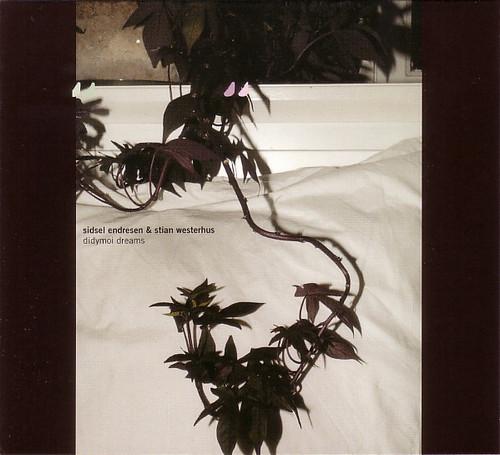 Sidsel Endresen and Stian Westerhus recorded Didymoi Dreams back in 2011 live at the Nattjazz Festival in Norway, but have not had an opportunity to release it as a record until now. Endresen's characteristically enigmatic caterwauling hits new peaks of oddity while Westerhus provides her a scarred drone landscape, making for one of the more unique releases of 2013 so far.
Sidsel Endresen and Stian Westerhus recorded Didymoi Dreams back in 2011 live at the Nattjazz Festival in Norway, but have not had an opportunity to release it as a record until now. Endresen's characteristically enigmatic caterwauling hits new peaks of oddity while Westerhus provides her a scarred drone landscape, making for one of the more unique releases of 2013 so far.
Endresen's nonsensical syllabic sentences are bound to turn some people off from this record. As I discovered in 2011 with the equally excellent Ha! featuring Humcrush, Endresen's voice is something to become conditioned to thoroughly before enjoying the music. Sidsel speaks in a clattering, layered spray of emotive bursts and word extracts, as if plucked from larger lyrics. As she continues along in each piece over the course of the album, she grows more adaptive to Westerhus' guitar manipulations, gradually transforming her voice from a percussive instrument to a smooth, horn-like imitation. His input is mostly atmospheric on this recording, where earlier collaborations with Sidsel were more foregrounded, but it does not go unappreciated. Gentle murmurs and bass give way to caustic distortion, accenting Sidsel when her voice grows softer or more staccato.
Strangely enough, Sidsel's voice is not far removed from the fringes of traditional jazz scat singing, but it gets closer to a terrified glossolalia than ever before on Didymoi Dreams, taking baby-talk phonetics and plosives and crushing them into compact strings that resemble sped up interviews in a foreign language. Meanwhile, Stian sees opportunities to match her remarkable physical control with synthesized digital elements, looping harmonics and string plucks in complement. I keep feeling the need to revisit "Barkis Is Willing," due to its uniqueness; an exercise in suspended animation that is impressively terrifying for its tense displacement of silence.
samples:
 
 
 
Read More
- Administrator
- Albums and Singles
 Germano walks a line between serene peace and dissonant chaos. She dips from one into the other on the piano while her voice remains unwavering; songs carry themselves with a cinematic air that feels compact, hanging on to every word and symbol with tenacity.
Germano walks a line between serene peace and dissonant chaos. She dips from one into the other on the piano while her voice remains unwavering; songs carry themselves with a cinematic air that feels compact, hanging on to every word and symbol with tenacity.
When Lisa gets happy, the environment behind her shifts into gentle strings and splendor; when she's contrite, the songs bend and warp under her guilt, where everything is wrong notes and missed beats. It's often so exactly choreographed that it seems she's conducting it by some precise magic in her voice. She commands each verse patiently; decades of time spent writing songs have rewarded her with an uncanny control over mood and she doesn't squander it.
No Elephants is a minor success in Lisa Germano's extensive catalog of music, carried by a unique sparseness of instrumentation, lucid songwriting, and the adroit, immerse production lent by Jamie Candiloro. She is at her best in uneasy tensions, dissecting minor key progressions into bizarre assemblages and serenely drifting away from the world. It doesn't carry the weight of prior successes, but that is kind of the point: weightlessness.
Candiloro, meanwhile, assists Germano on electronic drum loops, field recordings, and a lot of "cell phone," which is to say a plethora of ringing sounds and the buzzing that a phone makes through speakers before you receive a call. I have heard the latter utilized before in a few songs as a novelty, but songs like "No Elephants" and "Dance Of The Bees" are the first real attempts I've heard to introduce it like a genuine instrument. Oddly enough it works, especially when layered into Germano's mandolin or piano and bass from Sebastian Steinberg.
There are a couple of lesser tunes on No Elephants, some that seem to try and ape the ephemeral beauty of "Snow," however, I would not necessarily call them missteps. These songs contribute to the album's sense of light and space as much as the catchier compositions, gliding along like taking a sightseeing tour in a sleepy haze. These weaker songs might not be memorable but they faithfully maintain the album's atmosphere, to their credit. Only at the album's conclusion, the wistful "Strange Bird," do I really feel I've been planted back on the ground, and by that time it's been a pleasant and welcome reprieve from the outside world.
Her first album since 2009, No Elephants is a delayed follow-up to Magic Neighbor, a continuation of its mood and stripped-back style. Scarcer and more removed than ever before, it shows the deliberate evolution of a kind of quiet and delicacy that can't be faked. In focusing her efforts, Germano has brought her trademark earnestness to the odd new circumstance of losing all touch with the world.
samples
Read More
- Administrator
- Albums and Singles
 After 12 years and two very small cassette editions on American Tapes and Hanson Records, Dilloway and Drumm's I Drink Your Skin is available on CD. Dressed up in cheesy horror movie duds and packed tight with overblown noise, Aaron and Kevin each dish out a 25 minute ribbon of goofy loops, obnoxious high-end squeals, and blathering garbage sounds. It is gruff, but invigorating stuff—and more carefully put together than it at first appears.
After 12 years and two very small cassette editions on American Tapes and Hanson Records, Dilloway and Drumm's I Drink Your Skin is available on CD. Dressed up in cheesy horror movie duds and packed tight with overblown noise, Aaron and Kevin each dish out a 25 minute ribbon of goofy loops, obnoxious high-end squeals, and blathering garbage sounds. It is gruff, but invigorating stuff—and more carefully put together than it at first appears.
For I Drink Your Skin Dilloway and Drumm each made up a composition of sounds generated by the other guy. According to the Hanson website, the samples Aaron gave Kevin consisted of loops pulled from a Renaissance eight-track tape, and the mini-disc that Kevin sent Aaron was covered in spilled coffee—its contents a mystery. The way Dilloway treats them, it probably doesn't matter. His side of the release piles stroboscopic flashes of God-knows-what on top of rhythmic loops and interminable waves of full-spectrum clutter. It's hard to concentrate on any one part of Dilloway's track, but he glues the whole thing together with a series of identifiable loops, which are separated from each other by piercing high frequency tones shrill enough to piss off the neighbor's dog. I wouldn't call it a suite exactly, but I hear at least three distinct sections on this track. The sound is as turbulent and harsh as anything else Aaron's done, but those loops hold it all together and give some shape to the otherwise shapeless chaos of his work.
Drumm also uses a loop or two on his side, but he treats them differently by carving some space out around them. One of those loops sounds vaguely like a cut and spliced horn section from Renaissance's "Mother Russia," though I can't be sure of it. It also sounds like something from a Mystery Science Theatre 3000 episode: blithe enough to be fun, but working hard to sound scary too. Lots of flanging, oddball pitch-bending, and a pinch of Theremin-like spookiness further add to the funhouse effect. That kind of variety and relief makes it easier to focus on everything Kevin pushes through the speakers, and by working with concentrated aggregates of noise, he keeps the details from rushing by too quickly. The sounds are still harsh, they're just a touch more approachable thanks to the way Drumm handles them.
I'm glad Hanson finally made this album more widely available. Both pieces are intense, heavy, and just as much fun as anything found on either artist's better known albums. Remember, Sheer Hellish Miasma and Dread were both recorded around the same time as I Drink Your Skin, so it comes from a particularly strong period for both of them. That it is not as well known is only a matter of availability, not quality. Now that there are more than 100 cassette copies floating around, I suspect it will win a lot more love.
samples:
 
Read More
- Administrator
- Albums and Singles
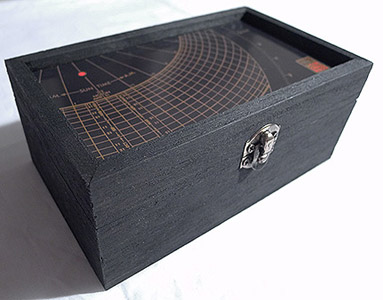 Aeronaut, who is Steve Fors (and half of the combo The Golden Sores) has been working at his sparse, complex approach to sound art for quite a few years now, but it all comes together beautifully on Coronal Mass, his first full physical release, presented beautifully in a hand-made box painted by the artist himself.
Aeronaut, who is Steve Fors (and half of the combo The Golden Sores) has been working at his sparse, complex approach to sound art for quite a few years now, but it all comes together beautifully on Coronal Mass, his first full physical release, presented beautifully in a hand-made box painted by the artist himself.
On each of the two 18 minute compositions, Fors allows himself to stretch out and fill every moment of those durations, but in a constantly shifting and evolving sort of way.The A side initially crackles with digital static offset by rising and falling melodic calls, blending melody with chaos.Soon all transitions to the blissful, soft tones, intertwined with one another.
While by no means descending into awful new age territory, there is a peaceful warmth throughout, and even once a bit of distorted electronic guitar enters the mix, the delicate balance is not upset.The guitar eventually envelops the entire piece in gauzy, yet sharp haze that embraces both dissonance and beauty.
The second piece stays even further away from the harsher passages, opting instead for a bleaker, more dour mix.Bowed tones and shifting passages of melody conjure up a distinct darkness that is moody, but not at all uncomfortable.Again, the more understated moments are buried in a passage of soaring, lush guitar squall before pushing the piece into a climax of glorious noise.
All too often works like this fall into rote repetition and time-filling genre clichés, but that never happens on Coronal Mass.Fors pieces together two long compositions that never become static, but always seem to be moving and flowing into one another, creating a fascinating microcosm of sound that stands out as unique, but is in league with the best works of sound art.
samples:
 
Read More
- Administrator
- Albums and Singles
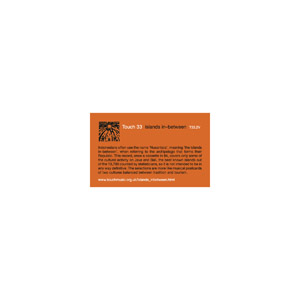 A wonderfully symbolic pairing of vinyl albums celebrating the timeless label's 30th anniversary last year. Islands In-Between reproduces the first non-compilation release, (a series of field recordings by label owner and curator Jon Wozencroft) and a double album celebration featuring contributions by much of the label's current roster. The pairing shows where the label has been and where it is going, and that consistency has not waned in these three decades.
A wonderfully symbolic pairing of vinyl albums celebrating the timeless label's 30th anniversary last year. Islands In-Between reproduces the first non-compilation release, (a series of field recordings by label owner and curator Jon Wozencroft) and a double album celebration featuring contributions by much of the label's current roster. The pairing shows where the label has been and where it is going, and that consistency has not waned in these three decades.
Islands In-Between was the first full-length work published by the label as a cassette in 1983, capturing music and local ambience found throughout Wozencroft's travels in Java and Bali.While apparently consisting of 15 distinct pieces, it works best as two side-long experiences that natural sit alongside each other.
As far as the music presented goes, gamelan is heavily represented throughout, from the complex, polyrhythmic "Gending Gending" and two separate "Degugn Instrumental" pieces, all of which make for dense, hypnotic works that occasionally drop to a slow, pensive pace before once again returning to the unrelenting rhythms."Cremation Gamelan" and "Ramayana II" are barer, conveying a more reverent, ceremonial tone within them.
Interspersed throughout these pieces are a variety of field recordings taken in the area."Watermark" is perhaps the perfect synopsis of the label, albeit one taken 30 years ago:a subtle suite of insects and frogs convey a timeless, organic sensibility before being rudely interrupted by the aggressive, modernist sound of a revving motorcycle engine."Frog Sound" and "Ducks", while giving away their sources in their respective titles, appearmuch more complex when detached from their natural habitat.At times the croaks and bird calls sounds seem to drift into what more closely resembles traditional instrumentation rather than natural phenomena.
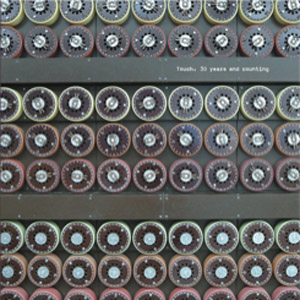 Fast forward 30 years, and the double album celebration of the label, consisting of 18 exclusive pieces from most of the label’s active roster, feels more like a cohesive composition rather than a compilation.With the vinyl showing no clear delineation between pieces, and the CD version indexed as four songs, it is surely no accident.
Fast forward 30 years, and the double album celebration of the label, consisting of 18 exclusive pieces from most of the label’s active roster, feels more like a cohesive composition rather than a compilation.With the vinyl showing no clear delineation between pieces, and the CD version indexed as four songs, it is surely no accident.
Other than the first piece, a field recording by Wozencroft as Touch 33, the remainder of the first side is the only point where who exactly is being heard can be questionable.Fennesz's "55 Cancri e" retains his understated sense of melody, but buried amidst a low frequency layer that segues almost too well into Bruce Gilbert's sweeping electronic and metallic groans on "Apis."This too is a bit difficult to discern where it ends and Rosy Parlane's "Awhitu" begins.It is only through the occasional obvious guitar scrape that Oren Ambarchi's "Merely a Portmanteau" is obvious.
The remaining three sides pair more contrasting artists and pieces together, from the sparse piano tones and low end swells of Eleh's "Overwoven" into BJNilsen's London field recording "The cackle of dogs and laughter of death" and the sequenced white noise of Nana April Jun's "High and Low and Mid Plane Mass".Ironically, these pairings can also seem to favor one artist over another:CM von Hausswolff's "Cleansing of the Cruel Tyrant's Chamber" buries a rhythmic pulse under a brittle layer of noise, while Jana Winderen creates a similar ambience with "In a Silent Place" via submerged hydrophones, but knowing the organic nature of her work, as well as the other elements of the environment captured makes her contribution more compelling.
Taken independently, Mika Vainio's "Erstwhile" is quite strong, with sounds generated via electric guitar destroyed and reconstructed digitally to bear almost no resemblance to where they began.Biosphere's "Gryfici" somehow manages to capture the sounds of his bike's brakes and reshapes them into an appropriately grinding, but also melodically understated composition.
The contrast of how these two albums are presented does a great job of demonstrating how the label has evolved as well:Islands In-Between is a plain white sleeve, with an unlabeled vinyl inside, only discerned by a small sticker adhered to the front.Conversely, Touch 30 is a lavish gatefold LP, beautifully capturing Wozencroft's photography and understated sense of design.As a label, Touch has consistently impressed me ever since I heard my first work from them, which I believe was New Order's Video 586 (which remains a favorite).As I have been following them since, there are always works I favor more than others, and these milestone releases continue that tradition.
samples:
- Gending Gending
- Ramayana II
- Watermark
- Overwoven (Eleh)
- In A Silent Place (Jana Winderen)
- Gryfici (Biosphere)
 
Read More
- Administrator
- Albums and Singles
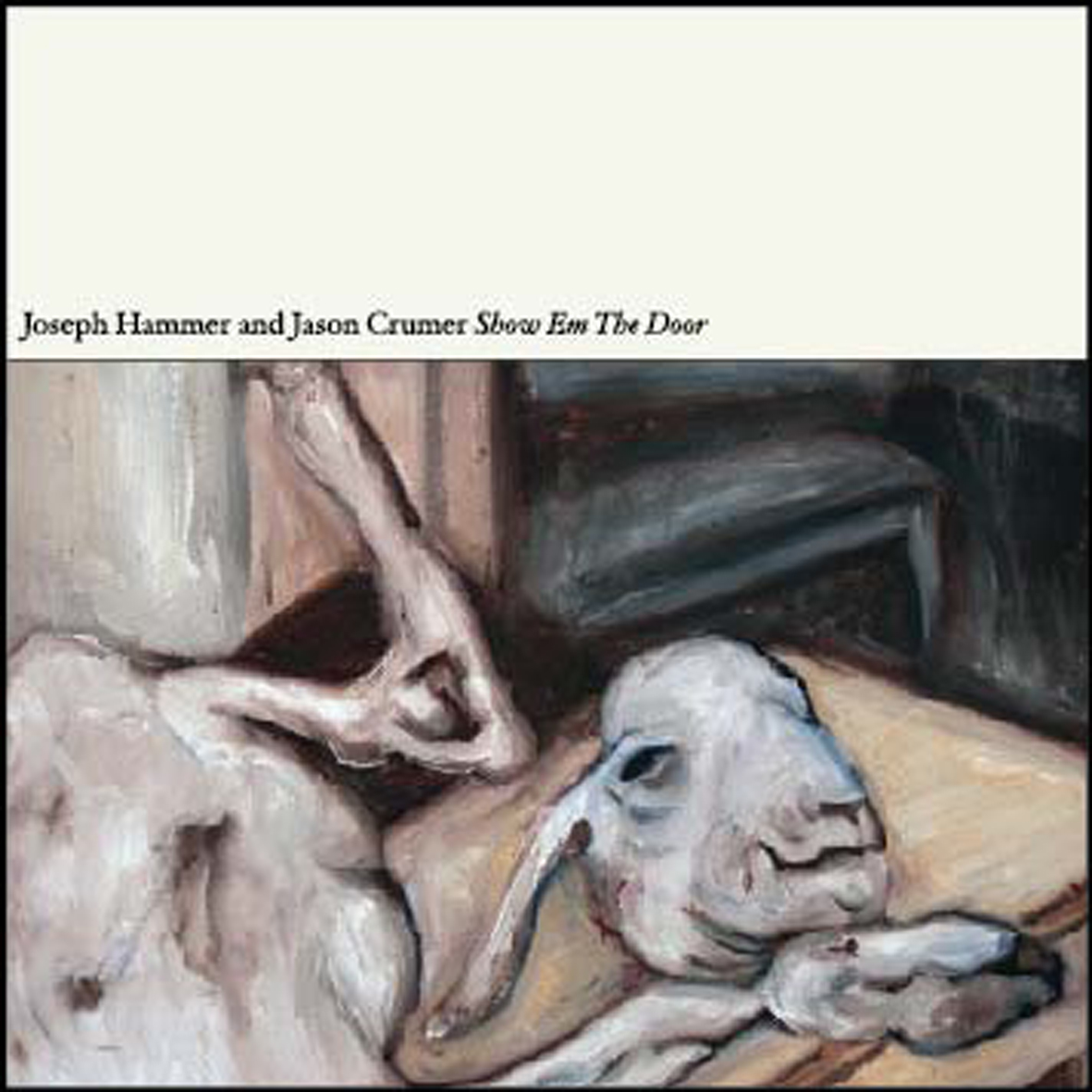 This collaboration between veteran LAFMS tape loop wizard Joseph Hammer and harsh noise titan Jason Crumer is not something I ever expected to happen, so the appearance of this album was an incredibly pleasant surprise.  Even better, the album feels like a true collaboration: while some of Hammer's distinctiveness is necessarily eclipsed by Crumer's flame-throwing, the contrast between the two artists' styles ultimately heightens the impact of both the more musical passages and the searing noise eruptions.
This collaboration between veteran LAFMS tape loop wizard Joseph Hammer and harsh noise titan Jason Crumer is not something I ever expected to happen, so the appearance of this album was an incredibly pleasant surprise.  Even better, the album feels like a true collaboration: while some of Hammer's distinctiveness is necessarily eclipsed by Crumer's flame-throwing, the contrast between the two artists' styles ultimately heightens the impact of both the more musical passages and the searing noise eruptions.
Sadly, it took me entirely too long to become familiar with Hammer's work, as the LA Free Music Society is decidedly not my scene at all and his solo work is quite hard to come by (though he did release an album on Pan in 2010 that somehow eluded me).  While he does not sound much like Jason Lescalleet, the two have a lot in common, as they both work with tape loops and have been quietly making great, unique music for a very long time and seem completely immune to the comings and goings of various trends and scenes.  Hammer's methods are quite a mystery to me, but he generally seems to create slowly building collages from blank tape loops and snatches of radio transmissions.
Crumer, for his part, is similarly unfazed by shifting trends, as nearly all of his former North American harsh noise peers have moved onto either drone music or something beat-oriented, yet he is still doing the same thing that he has always done and is absolutely killing at it.  The sheer violence of Crumer's work makes this quite an interesting and challenging collaboration, as it necessitates a lot of restraint and space on his part to allow Hammer's quieter, more slow-moving contributions to fully flower.  In fact, there are some pieces in which I wish Jason had been a lot more aggressive, such as the closing "TB Blues" (the album's sole misstep).  Hammer has plenty of time to unfold and develop that piece's looped accordion motif, but it is not particularly interesting and Crumer never gets around to exploding, opting instead to just sputter and simmer in the background.  Also, the periodic coughing and wheezing is fairly annoying and unfunny (I suppose it was rather naïve of me to expect no LAFMS-style wackiness at all on this album).
The remaining three pieces, however, are generally quite spectacular and tend to highlight both musician's strengths.  The title piece, for example, gradually evolves from a slow burning throb into a lurching, crunching, and oft-explosive Crumer apocalypse before giving way to a sputtering and stuttering outro of looped acoustic guitars and radio noise.  "Guitar," unsurprisingly, also features acoustic guitars quite prominently.  It takes time to get going, as it sounds like a tape recorder falling down a very long flight of stairs for much of its duration, but it gradually coheres into something quite melancholy and melodic by the end. The remaining piece, "Banner Drop," is probably the most perfect blurring of the two styles, as a grinding and dissonant electric guitar loop is violently slashed and battered by Crumer's eruptions of noise before gradually subsiding into a soothing industrial hum.
In general, I prefer the moments when Crumer allows himself to fully open up with ear-shredding blasts, but that is mostly because he allows himself to do it so infrequently.  Consequently, it tends to hit quite hard when it happens.  He and Hammer probably made as fine an album as could be expected, given the small amount of time they have had to work together and the sizable gulf between their styles.  Show Em The Door is not perfect, but Jason and Joseph definitely sound amazing on the occasions when they manage to lock together perfectly.  Also, I am surprised that this union even worked at all, as it seemed to me like Hammer's work needed a great deal of time and space to fully cohere...and it does, but I failed to anticipate how great it could sound if his work sneakily cohered behind the scenes as I was being blasted by cascading white noise and metallic crunches.
 
Read More

